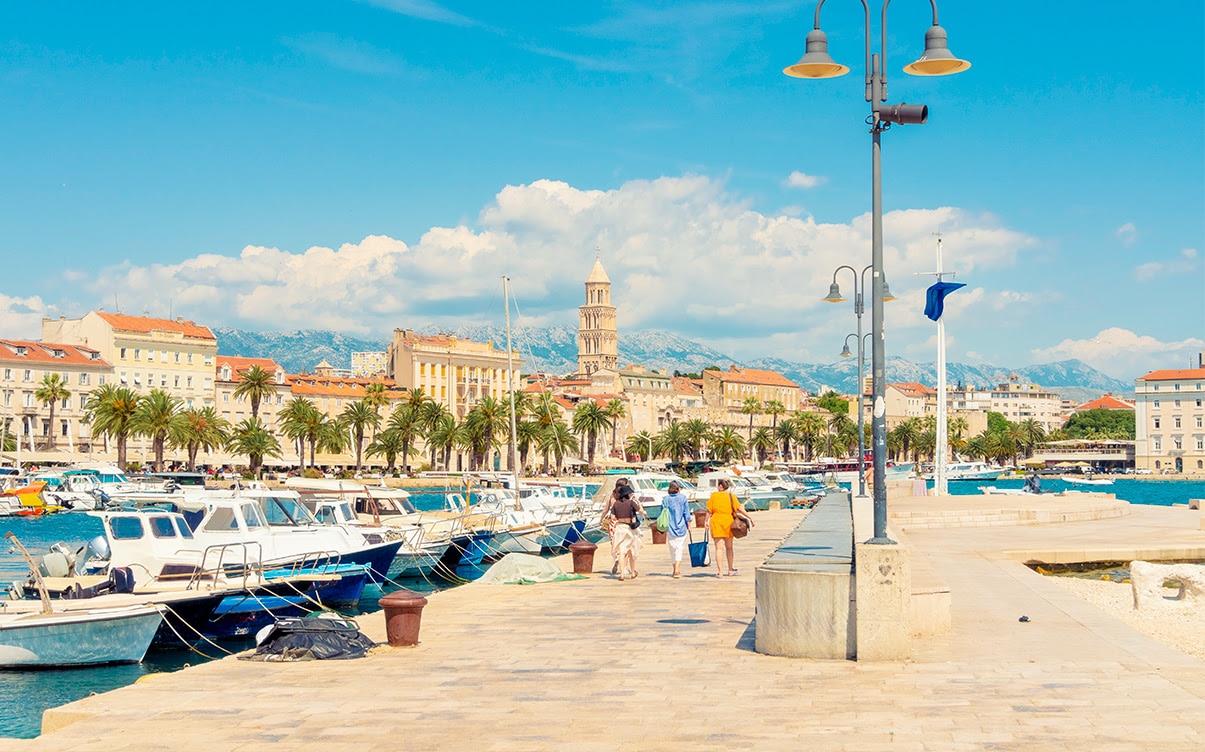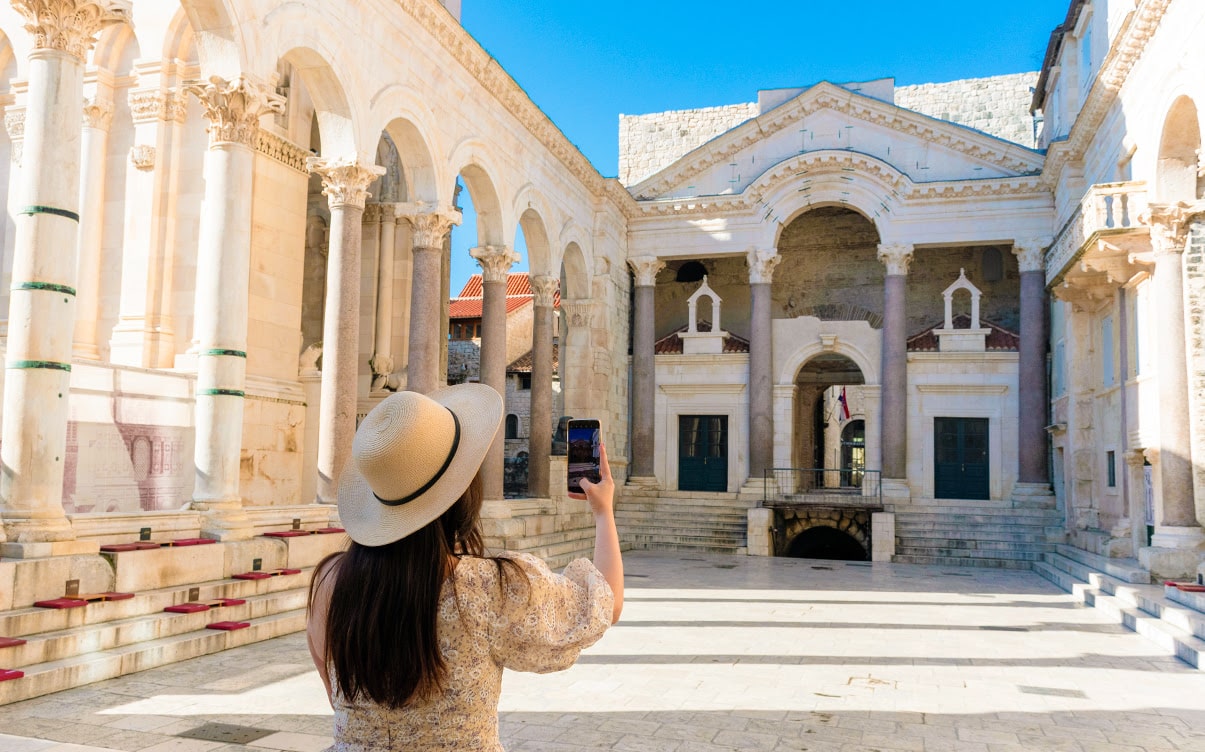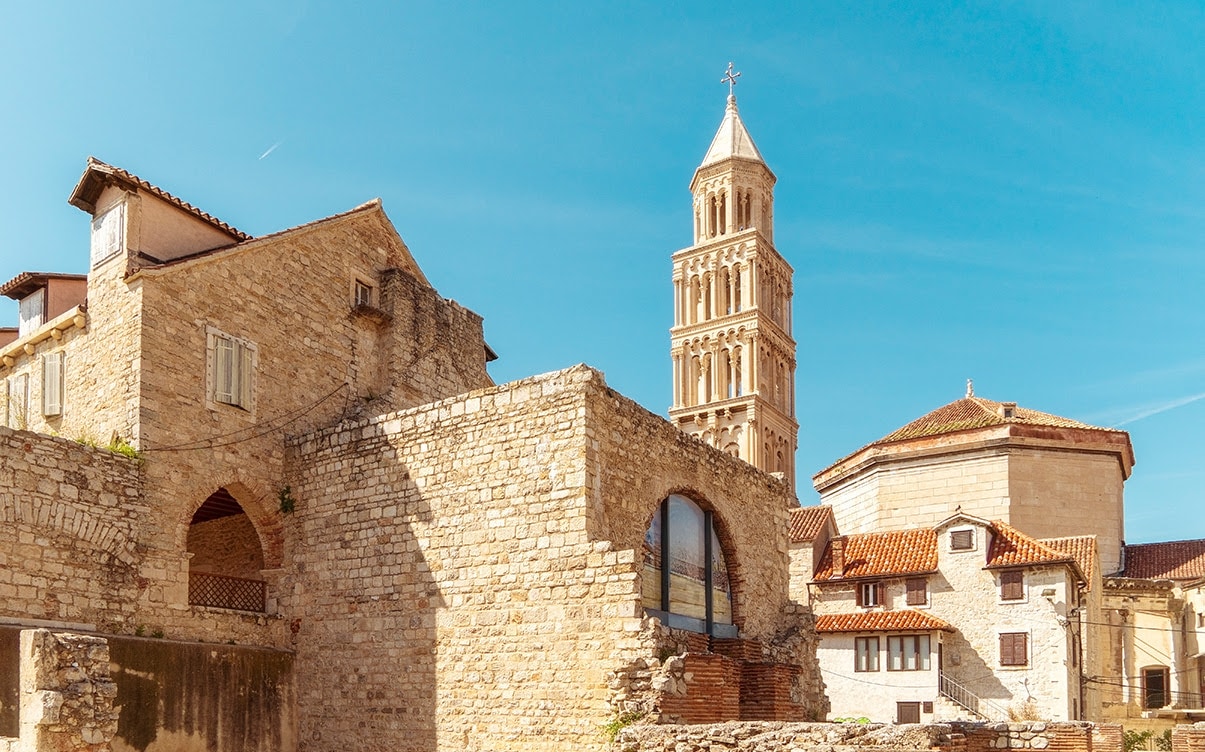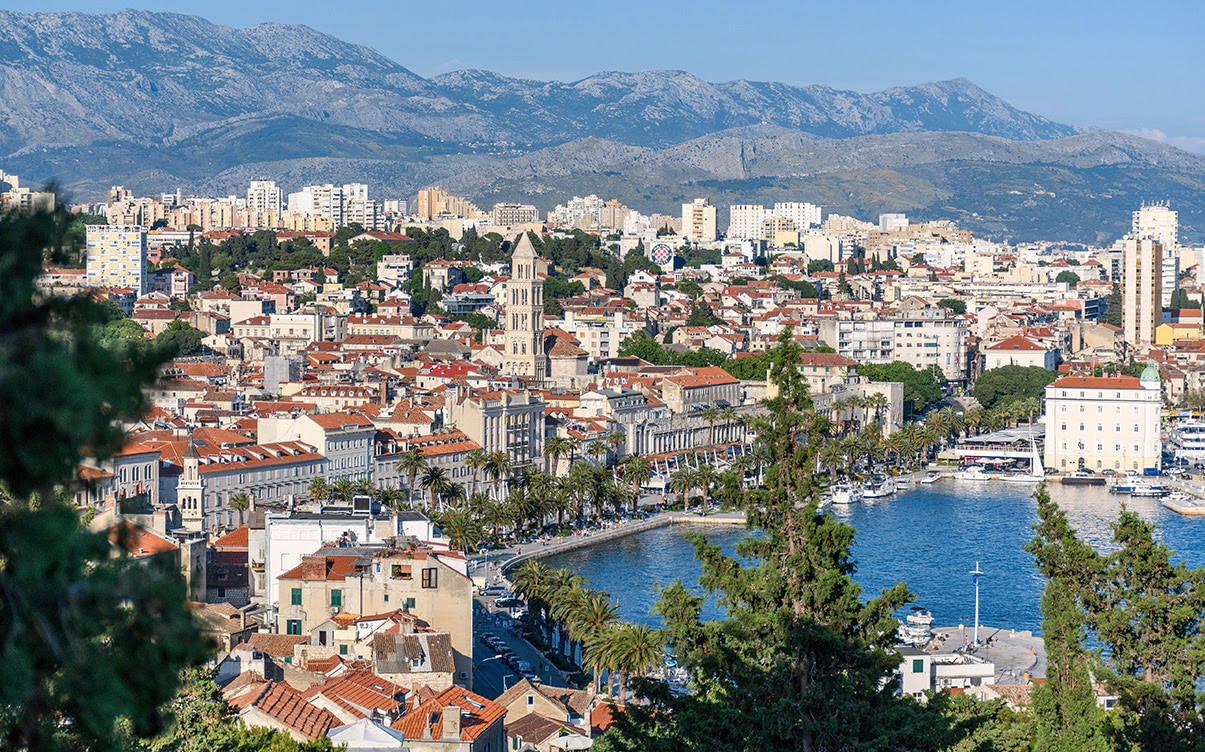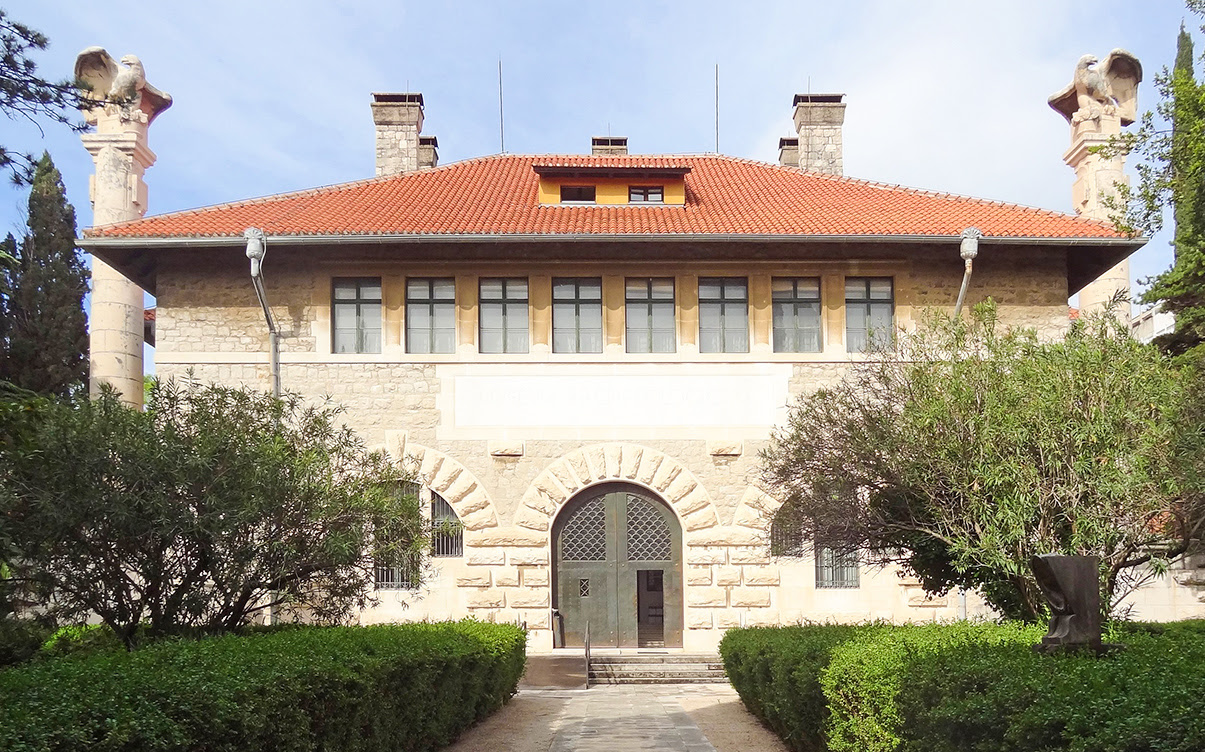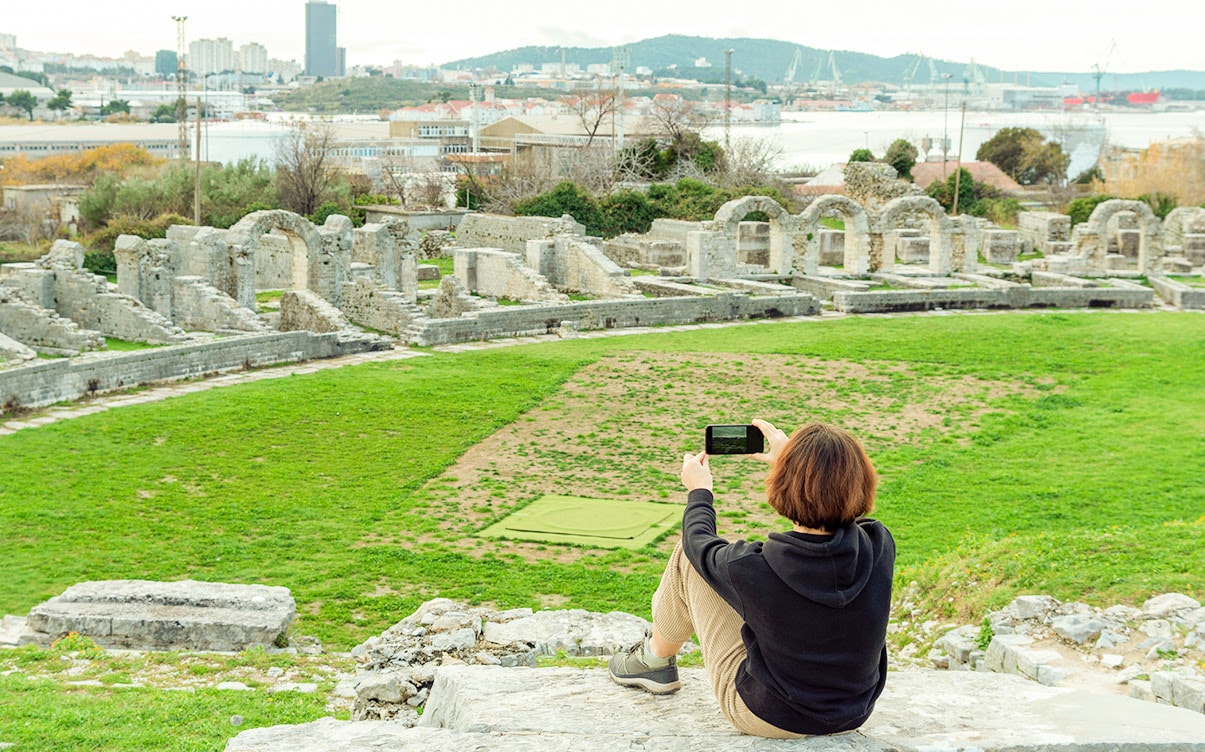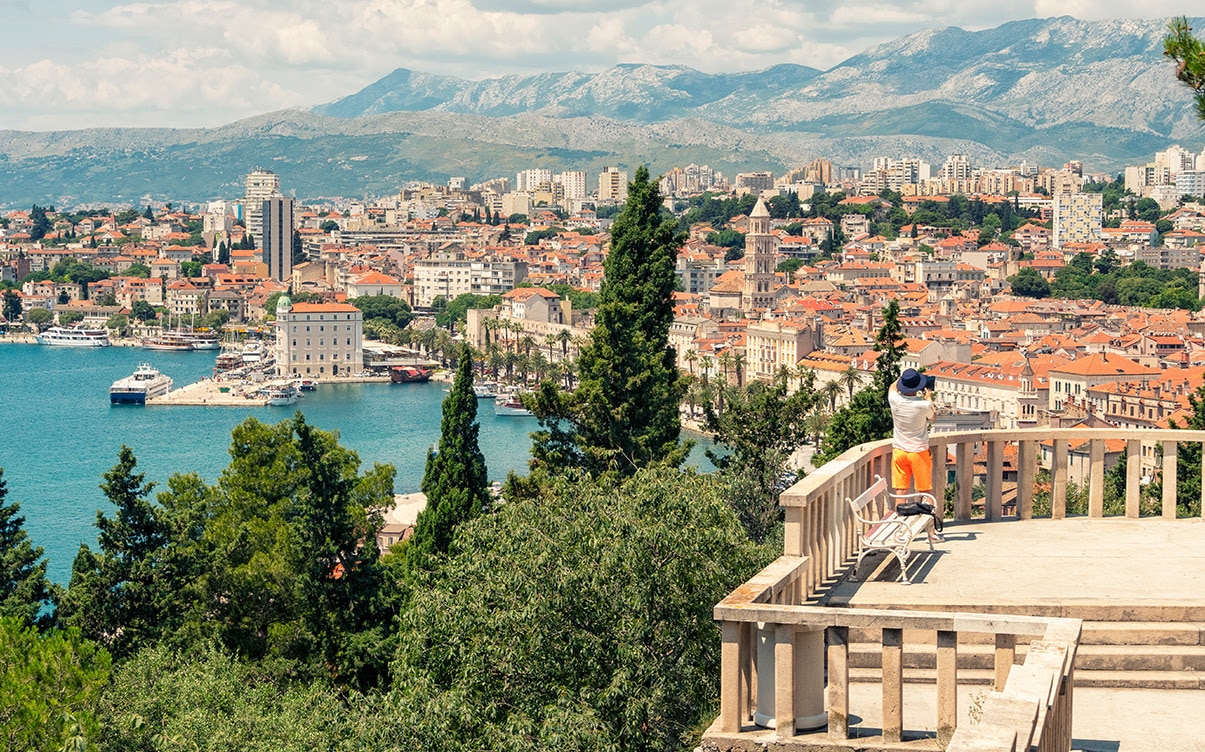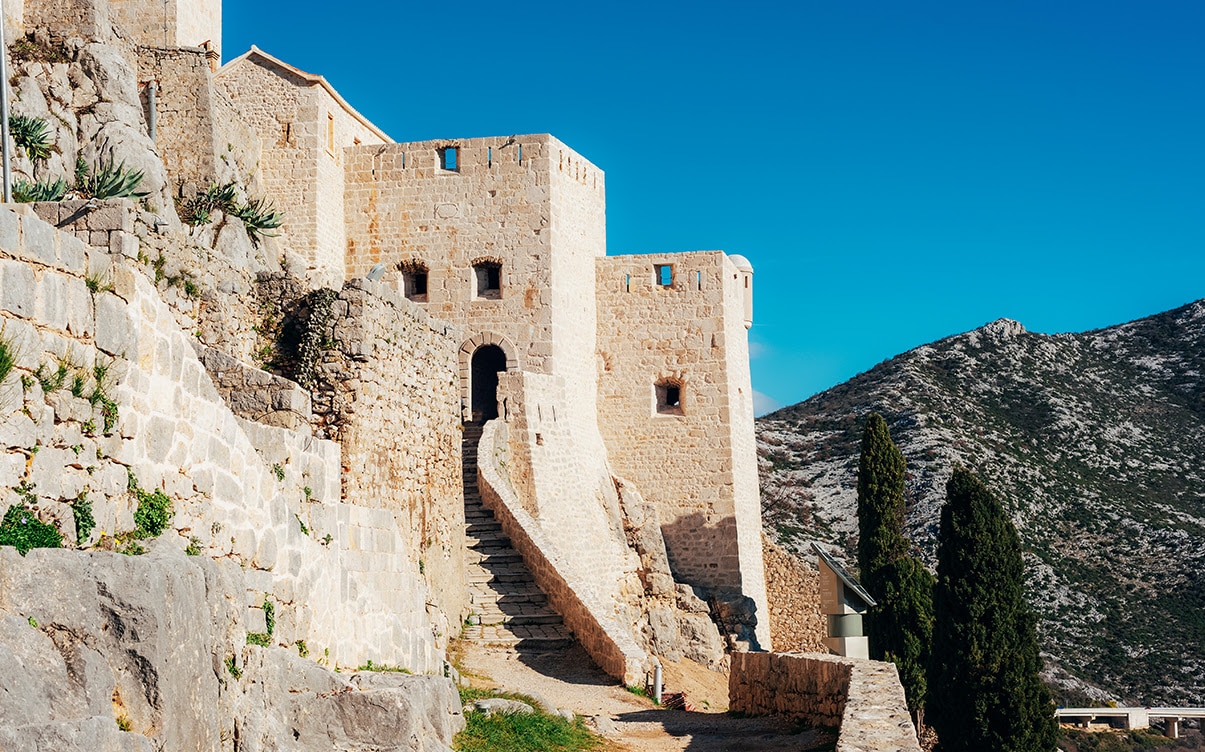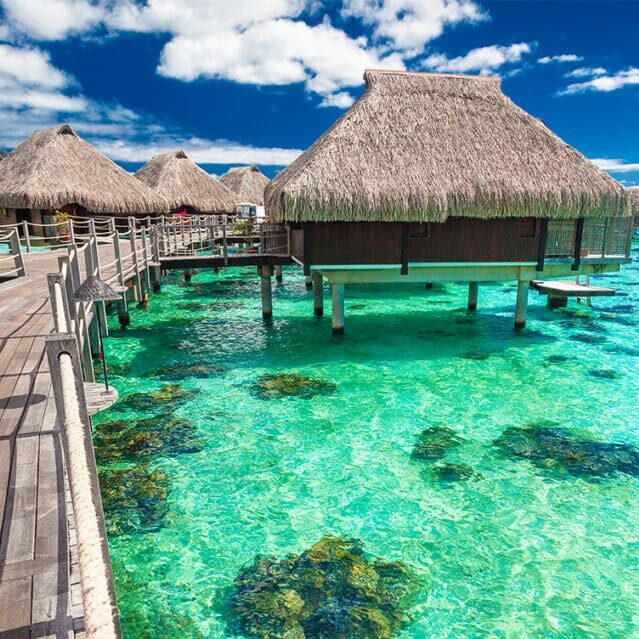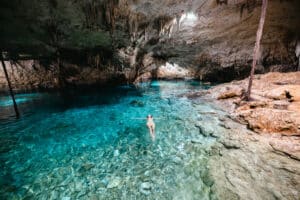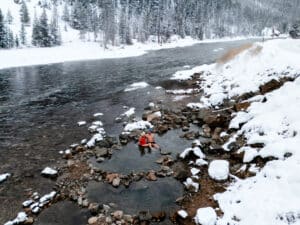Cultural Must-Sees in Split, Croatia: Historic Spots to Visit
Disclaimer: This post may contain affiliate links. Please see our Disclosure Policy and Advertiser Disclosure for details.
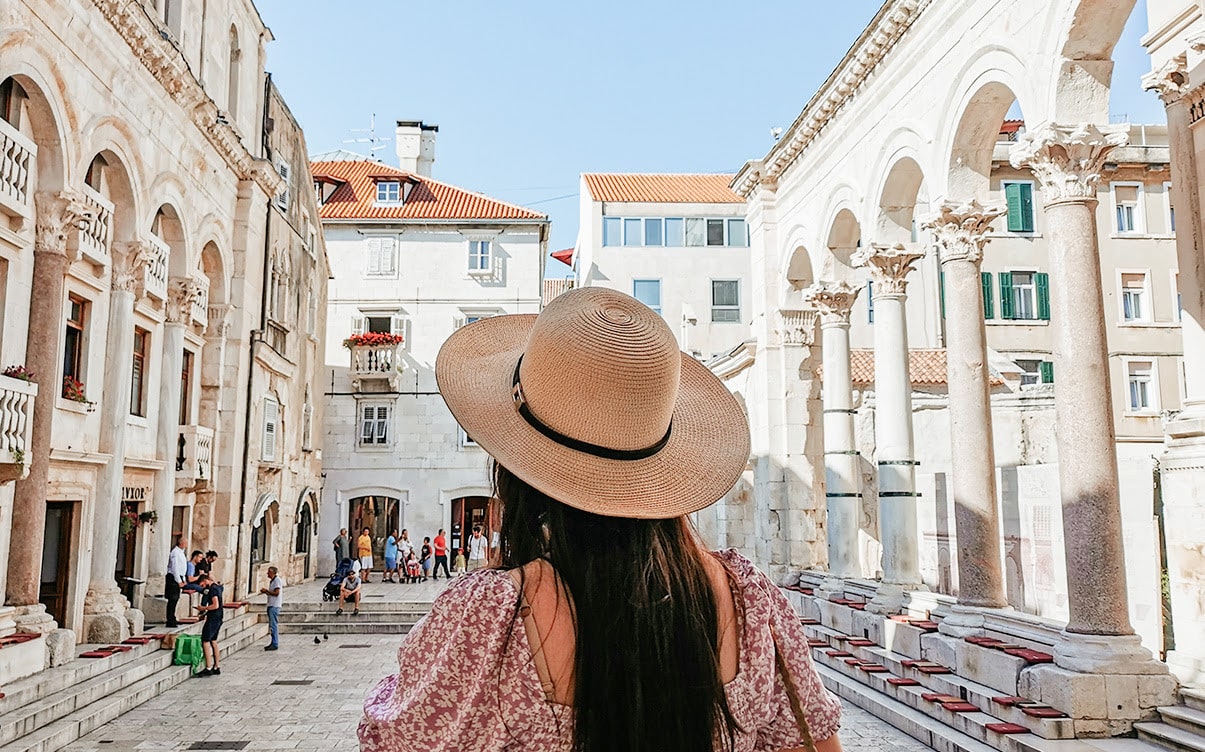
Throughout Europe, there are big-name cities everyone thinks of when they’re looking for a destination to visit. Paris, Vienna, Amsterdam, Prague, Rome; the list goes on. One you might not think of, though, is Split.
Split – historically named Spalato – is the second-largest city in Croatia, after the capital Zagreb. It’s a coastal city located on a small peninsula sheltered by islands along the shore of the Adriatic Sea. With a population under 400,000 in the greater metropolitan area, it is by no means a land of skyscrapers and highways; rather, it’s a gorgeous historic city with a ton to see and do, including a UNESCO World Heritage Site.
With a history that stretches back into the time of antiquity, walking through the streets of Split gives you a glimpse into thousands of years of history and culture. The question is, where should you prioritize visiting if you want to make the most of your trip?
Key Tips for Visiting Split, Croatia
Split is easily accessible, relatively cheap, and an excellent place to visit for anyone who has an interest in history. The city has changed hands a dozen times over the course of the last few thousand years, and remnants of all of these cultural changes still linger in the city. Before you go booking your tickets, though, what do you need to know?
Getting to Split: Located as it is on the shores of the Adriatic Sea, Split is easy to visit. They have a small airport that accepts both international traffic and regional traffic. Numerous bus lines run from other places in Croatia to Split. And, if you happen to swing into Italy first, you can take a ferry across the sea. That option is relatively slow but beautiful, so we recommend it if you can swing it.
Staying in Split: There are plenty of accommodations, ranging from small B&B-style lodging, rental apartments, hostels, and more modern hotels, all available to you. You can pick pretty much anywhere you like, though the closer you are to the city center and Old Town, the easier it is to see most of the historic attractions the city has to offer. Alternatively, you can stay in Marjan Hill, where you’re close to the forests and have a great view of both the city and the sea.
Paying in Split: Money in Croatia is the Euro, though they only switch away from the Croatian kuna in 2023. You can generally get around fine using a credit card, though it’s worthwhile to carry some cash for small tips and for the occasional streetside stand or small business that doesn’t have the means to accept a card. Tipping isn’t prominent, though tossing a few Euros to a taxi driver or other service provider is appreciated.
Climate in Split: Split is generally cool for most of the year, with highs in the 70s and 80s in the peak of summer. Winter has highs in the 50s and lows in the 40s, though it can occasionally snow, with maybe a couple of snowy days each year at most. It tends to be gloomier and rainier in the winter than anything. Summer, too, can have hot days, and if you’re visiting in the peak of summer, we recommend doing your most historical visits in the early hours to avoid the heat in places like the palace or the bell tower, which can get sweltering in the sun.
Getting Around Split: Split is solidly European in terms of getting around the city. Cars dominate, and the roads are busy, but there’s a robust public transit system that can take you anywhere within the city limits and to many of the neighboring towns like Trogir, Solin, and Omis. You can rent a car, or you can take the bus, which is much easier and cheaper. It’s also possible to get a bike and ride around town! Two tips, though:
- If you’re renting a car, get a small one; many streets, especially in Old Town, are narrow and tricky to navigate.
- If you’re walking or biking, be aware that the city is very hilly, which can be challenging.
Talking in Split: Croatian is the dominant language in Croatia, as you might expect, but English is also taught in schools, so pretty much everyone is fluent in both languages. You’ll have no trouble speaking English, and many of the websites, apps, and even signs have English options. Normally, we would include a guide to some common phrases in Croatian that can help you get around, but unless you can intuit how to pronounce phrases like “Dovidjenja” or “Gdje je WC,” well, you’re better off looking up a dedicated guide.
Safety in Split: Croatia, in general, is considered a safe country, and the US State Department has no special travel advisories for either the country or the city. As for the city itself, they brag about how safe it is. All you have to think about are the usual hazards of travel, like tourist scams and the occasional petty theft. Violent crime is nearly nonexistent, though, so you don’t have to constantly watch your back.
If you have any other questions about Split, please feel free to ask in the comments! We’re not natives, of course, but we know our way around tourist destinations and can get you your answers.
The Best Historic Destinations in Split, Croatia
Split has thousands of years of history and cultural shifts built atop one another, all ripe for exploration. Walking down some of the streets, you can easily feel like you’ve been transported back to ancient Greece or the Middle Ages, and that feeling can change when you round a corner! So, where should you seek out to visit?
Diocletian’s Palace
Every single list of tourist destinations in Split has to include the palace. It’s their UNESCO World Heritage Site, and it’s one of the best-preserved examples of Roman architecture in the world. It was constructed all the way back in the 4th century for the Roman Emperor Diocletian and served as both a summer home and a military camp. As such, it has a little bit of everything, from lavish imperial living quarters to stark military barracks and storage rooms.
Fun fact: some segments of Game of Thrones were filmed in this palace! So, if you think you recognize a tunnel or corner from a scene from Meereen, you aren’t wrong. In fact, they even offer a walking tour throughout the palace specifically aimed at showing the filming locations if you’re a fan of the show.
Saint Dominus and the Bell Tower
Within the palace walls, in a two-for-one tourist spot, stands the world’s oldest catholic cathedral. Originally built as the mausoleum for Diocletian, it served as a church for centuries, honoring both the Virgin Mary and Saint Dominus, the patron saint of the city itself.
The key attraction here is the bell tower, an ancient structure that stands tall today. It’s not the tallest structure in Split – that honor goes to the modern Dalmatia tower, a high-rise office building with a hotel built into the 17th-27th floors – but it’s the tallest ancient structure and still rises high above the historic shoreline districts. You’re allowed to climb the tower (with a small admission fee) and can see a panoramic view of the city.
Explore the Old Town
The Old Town of Split is the historic center of the city, from which everything else has sprawled over the centuries. It’s packed with pretty much everything: tiny cafes, boutiques, and souvenir shops, larger attractions like the Croatian National Theatre, the beautifully colored Republic Square, and even a fish market if you’re interested in the freshest catch of the day.
Other landmarks you can find in Old Town include the palace, of course, but also:
- Jupiter’s Temple, a 3rd-century temple converted into a baptistery.
- Golden Gate, one of the entrances to Old Town, or an exit to one of the many gorgeous city parks.
- Old Town Hall, the city hall from the 15th century, converted into a museum of local history.
- Riva, the waterside promenade for pedestrians and tourists to enjoy the water, the shade, and some people-watching.
There are also some more modern attractions in the area, like the Jaman Art Center, the Game of Thrones Museum, and Froggyland, a unique museum of taxidermied frogs.
Visit the Archaeological Museum
This museum is a testament to the long and varied history of Split. It was founded in 1820, making it one of the newer attractions on our list, but it’s packed full of collections spanning from the ancient Greek and Roman times to medieval artifacts and treasures to elements of the city over the centuries.
It’s an incredibly interesting, if relatively fast, journey through the unique history of the city.
See Ancient History in Salona
Salona is an ancient city originally built at least 2,200 years ago. It was originally Illyrian, was seized by the Romans, and was unfortunately razed in the 7th century. Many of the city’s archaeological treasures are currently in the Archaeological Museum, but the architectural remnants and layout itself still stand today.
There’s actually a ton to explore, from the Salona Amphitheatre in the west to the Manastirine (an ancient Christian cemetery) in the north, to the city basilica in the center, and all the grounds in between and around. You may want to drive from spot to spot, as it’s rather large and sprawling, but it’s well worth the trip.
Hike to the Peak of Marjan
Old Town and the majority of the oldest locations in Split are located at the seaside, in the low-lying area of the peninsula, easily accessible by ships in ancient times. The further tip of the peninsula, though, is dominated by a hill called Marjan.
While you might expect such a hill to have been dominated by some palace or castle, it has actually been designated a scenic park for over 1,700 years. Today, it’s covered by a pine forest, with winding roads, hiking trails, and attractions found throughout. You can hike to the peak of the hill and see the city laid out below you, and spend some time in the Split Zoo and Natural History Museum.
It’s about an hour of hiking from the city-side entrance to the hill, up and over it, and down to the far tip of the peninsula where the Institute of Oceanography and Fisheries is located. The institute isn’t a public facility, but seeing the building from afar – and enjoying the nearby beaches – is great.
Feel in Control in Klis Fortress
The geography surrounding Split is stark and unforgiving, making the verdant bayside greenery all the more important to the ancient people who first settled it. Klis Fortress was built as a gateway to control entry into the region, and while it’s far from the only way to actually enter Split these days, it still stands as a stunning historical monument to ancient access control.
Klis Fortress is some distance outside of the actual city of Split, but even just getting to it is incredible, following a winding and hilly road up to where it stands, with an unchallenged view of the area around. If you thought the view from Marjan was great, just wait until you make it up here.
Your Favorites Here
Have you visited Split before? Are you planning a trip and have an attraction or two you want to visit that we didn’t mention? Split is so packed full of history that it can be hard to go anywhere without seeing something incredible. There are too many small “attractions” like statues, architectural flairs, and historic buildings to count, let alone list in a single blog post. And that’s all before you even consider leaving the city for attractions like Plitvice Lakes! You really have to see it all to believe it. That’s why we hope you visit and let us know all about it! If you have any questions, be sure to let us know! We’d be more than happy to help!
You may also enjoy:

